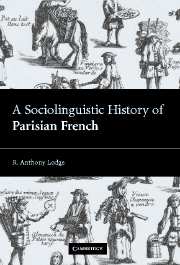Book contents
Conclusion
Published online by Cambridge University Press: 22 September 2009
Summary
In this book we have attempted, perhaps rashly, to sketch in the broad outlines of a sociolinguistic history of a great city across eight centuries. At every stage we have been hamstrung by the shortage of relevant data, our difficulties mounting the further we move back from the present day. Sociolinguists tell us that the vernacular is the essence of language, and that urban dialects are invariably vernacular in form. However, by its nature the vernacular is evanescent. Even in the modern world, observing the genuine vernacular is rendered exceptionally difficult by the ‘observer's paradox’. In bygone worlds these difficulties multiply exponentially. Like a shy nocturnal beast, the vernacular vanishes as we approach, leaving only the faintest traces of its passage. We can be sure that it has always been around, but we can know pitifully little about what it was like.
Historical sociolinguistics cannot reach levels of certainty achievable in contemporary sociolinguistics. It can never do more than extrapolate from the tiniest of clues, ‘join up the dots’, make the best of a very bad job. Relevant sociolinguistic data surviving in Paris from the three periods distinguished in this book may be richer than what is found in most European cities, yet, even here, they are nowhere near as conclusive as we would wish. Are they substantial enough to support the claims we have been making?
- Type
- Chapter
- Information
- A Sociolinguistic History of Parisian French , pp. 249 - 250Publisher: Cambridge University PressPrint publication year: 2004

